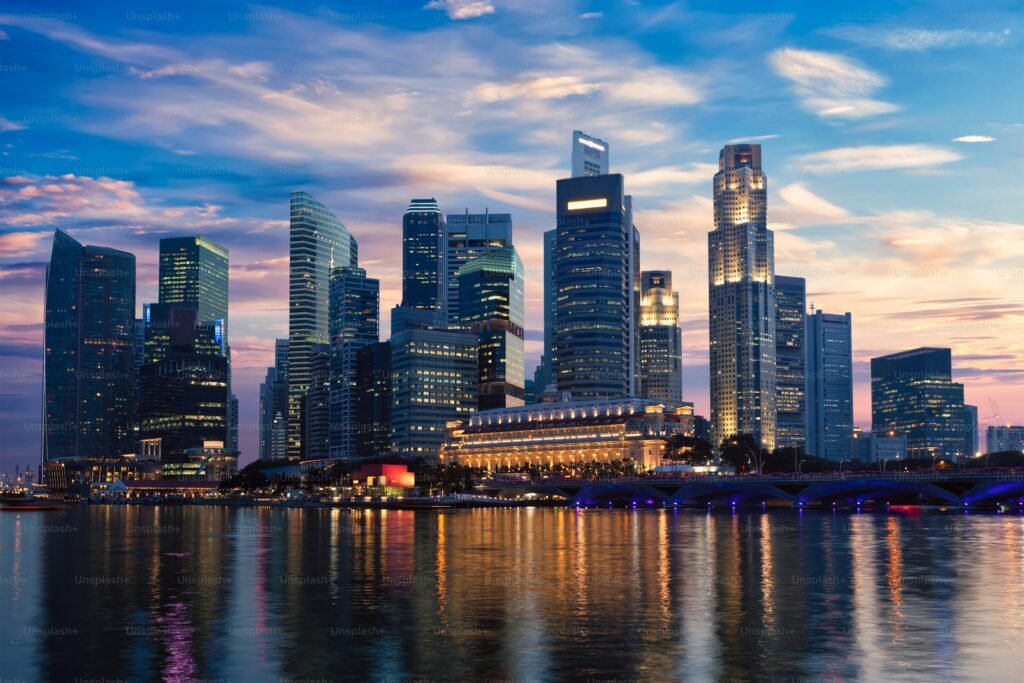A business district is the beating heart of any city, providing the hub for commerce, finance, and development. These districts are where businesses, both big and small, come together to create a vibrant, dynamic space that drives the economy forward. From towering skyscrapers to boutique shops, a well-developed business district has a significant impact on the city’s growth and reputation. In this blog post, we’ll dive into the essential components of a thriving business district and explore how these districts shape urban landscapes.
What Defines a Business District?
A business district is a concentrated area within a city where businesses, financial institutions, and commercial activities thrive. These districts are typically located in the heart of the city, with easy access to transportation, making them the preferred choice for corporations, retailers, and service providers. The presence of office buildings, banks, restaurants, retail stores, and hotels makes a business district a bustling area where transactions, deals, and commerce occur daily. Inexpensive Business Cards: Affordable and Professional Solutions
Key Features of a Successful Business District
A thriving business district is defined by several key features, which make it a magnet for business activity and a driving force in a city’s economy: Inexpensive Business Cards: Affordable and Professional Solutions
- Accessibility: A successful business district is easily accessible via various forms of transportation, including subways, buses, taxis, and roads. The ease with which people can travel to and from the district is critical for business operations.
- Infrastructure: Strong infrastructure is essential for a business district’s success. This includes modern office spaces, reliable internet and phone services, and advanced technological facilities. Without these, businesses would struggle to operate efficiently.
- Economic Activity: Business districts host various industries, from finance and law to technology and retail. The concentration of diverse sectors helps create a robust local economy that attracts further business investments.
- Amenities: Business districts also offer numerous amenities that cater to employees and visitors, such as restaurants, cafes, hotels, and entertainment venues. These amenities not only serve business people but also draw tourists, further boosting economic activity.
- Urban Design: The aesthetic appeal and functionality of a business district are vital. Modern architecture, well-maintained streets, green spaces, and public art contribute to an inviting environment where businesses want to establish themselves.
The Economic Impact of Business Districts
Business districts are economic engines. These districts generate jobs, boost the local economy, and attract domestic and international investments. For example, cities like New York, London, and Tokyo have iconic business districts (e.g., Wall Street, Canary Wharf, and Marunouchi, respectively) that are crucial not only to their local economies but also to the global market.
Job Creation and Opportunities
A thriving business district offers employment opportunities across a wide range of sectors. From high-level executives working in finance to administrative assistants in law firms and baristas in nearby cafes, the job market within a business district is diverse. This concentration of businesses also fosters networking opportunities, allowing employees to interact with others from different industries.
Attracting Investments
Business districts often attract investments due to their economic potential. Investors see these areas as hotspots for commercial real estate and business development. High-quality office spaces, coupled with an influx of companies setting up headquarters, make a business district a prime target for investors. Furthermore, new businesses are attracted to these areas because of the accessibility to clients, talent, and networking opportunities.
Top Business Districts Around the World
Several business districts around the world have made a significant impact on both their local economies and the global market. Below are some notable examples:
- Wall Street (New York City): Perhaps the most famous business district globally, Wall Street is synonymous with the financial world. Home to the New York Stock Exchange and numerous multinational banks, it plays a critical role in shaping the global economy.
- Canary Wharf (London): This business district is one of the most important financial centers in Europe. With its modern office towers and global corporations, Canary Wharf is a symbol of economic strength.
- Marunouchi (Tokyo): Located near the Imperial Palace, Marunouchi is Tokyo’s premier business district, with major banks, insurance companies, and multinational corporations occupying prime real estate.
These districts are prime examples of how a well-established business district can shape not only the city’s economy but also its global standing.
Challenges Facing Business Districts
While business districts are vital to economic growth, they also face challenges. Urban sprawl, rising real estate prices, and the increasing shift towards remote work are putting pressure on traditional business districts. Companies are now considering whether having a physical office in a business district is still necessary in the digital age. In response, many business districts are adapting by offering flexible office spaces, coworking environments, and fostering innovation hubs to keep businesses and employees engaged.
Rising Real Estate Costs
As demand for office space in top business districts increases, so do real estate prices. Small businesses often struggle to afford office space in prime locations, which limits their ability to operate in high-profile areas. This can lead to a concentration of wealthier companies in these districts, potentially stifling innovation and diversity.
Remote Work and Hybrid Models
The rise of remote work is challenging the traditional concept of a business district. Companies are now offering employees the flexibility to work from home, which reduces the demand for large office spaces. To combat this, some business districts are developing flexible workspaces and embracing hybrid models that combine in-person and remote work environments.
The Future of Business Districts
The future of business districts is both promising and uncertain. As cities grow and evolve, these districts will continue to be crucial hubs of economic activity. However, they must adapt to new business models and technological advances to remain relevant. Urban planners and developers need to rethink how these districts operate, making them more sustainable, inclusive, and adaptive to the changing work environment.
In conclusion, business districts are integral to the success of modern cities. They bring together diverse industries, generate economic growth, and provide ample opportunities for employment and investment. As we look to the future, the role of business districts will undoubtedly evolve, but their importance to urban economies will remain steadfast.
Conclution:
In essence, a business district serves as the economic heartbeat of a city, bringing together businesses, industries, and services that fuel growth and prosperity. From their strategic location and accessibility to the wealth of opportunities they provide, these districts are key drivers of urban development. However, as cities evolve and the nature of work changes, business districts must adapt to new trends, such as remote work and flexible office spaces, to maintain their relevance. By embracing innovation and sustainability, business districts will continue to play a pivotal role in shaping the future of global economies, fostering job creation, investment, and vibrant city life.



